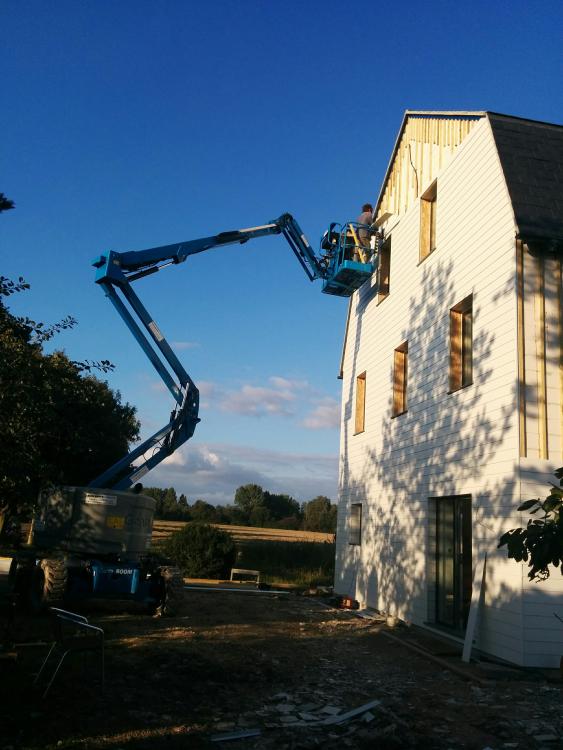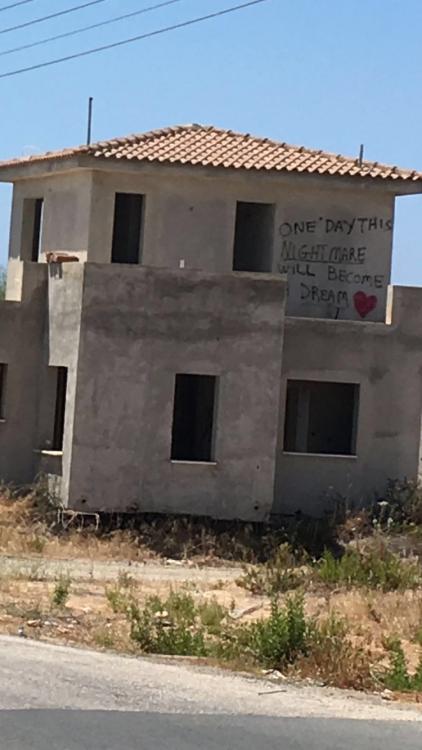Leaderboard
Popular Content
Showing content with the highest reputation on 09/19/17 in all areas
-
When I worked in car sales, we had a great boss, really chilled and reasonable. He told us of the night two customers came in complaining about some light scratches on their car. The background was they bought a car that was a few years old and were not happy with a lot but ended up demanding that any tiny flaw was fixed. Tommy had had enough of them by the time they came in that night to complain about more trivial things (if they wanted a perfect car they should have bought a new one) . So he sat them down and told them he would fix everything they wanted, even although he disagreed with them. He had one condition. They had to go up to York hill Sick Kids Hospital and visit for an hour or so. Only then would he authorise the work. Never saw them again. You'll find your own way of getting perspective but once you do, it'll all seem a bit brighter. I often say to my other half when we have problems that we're pretty lucky to have them in many ways - the real hardship of having Windows two shades of grey is none at all. So we can't afford the UVC until nearer Christmas? Poor us. It's probably why we've never been too stressed with the build. Hopefully you'll end up in the same place (metaphorically!).6 points
-
Thanks @JanetE and @SteamyTea. An interesting nugget that Janet. We'll think about it. We're both working at channeling the annoyance into positive action. At this stage it would be easy to misdirect effort. So often we have been (and Debbie still is) in the position of having to advise others about how to dig themselves out of crises. Well, now it's our turn. A walk along the shore at the mouth of the river Lune is what's called for this morning. And then get some of the joints between the blocks foamed up in preparation for a bit of rendering.3 points
-
Original house contained cheap UPVC windows that were ill fitted and would not match the new windows in the two extensions. So the decision was made to fit new windows throughout with the original plan to go for alu-clad wooden, nut resorted to UPVC due to cost and worries on how some of the alu-clad windows were constructed. Surprising how difficult it was to get quotes that were in an affordable category. Some companies needed numerous follow-up calls which was very frustrating in view of the fact that I would be spending approx £20k on their product. In the end, although I would have preferred to buy local, I ended up sourcing windows from abroad which ended up costing a lot less than anything UK-sourced and also meant they were passivhaus certified! Pity how many sectors in the UK shoot themselves in the foot by atrocious service which is partly down to them not wanting to deal with end clients/self-builders. There was a lot of email ping-pong, but I think that would have been the case with UK windows too, but they were at least keen to do business which didn't seem to be the case with many of the UK ones. The only area I was hesitant about was measuring the window openings which was further complicated by the fact that I was using special EWI brackets which would position the windows outside of the window opening itself. So I had to take into account the bracket measurements in addition to the window openings. I must have measured each opening at least 15 times before submitting my final order. Glad to say everything seems to fit (just 3 doors to fit now). Unloading some of the units was a bit precarious especially the 800kg 4.6x 2.3m slider using a standard forklift and then travelling 200m down the road! I got a local window company to help me fit the windows and of course they had no clue how to fit them with the EWI brackets. It took a while for them to admit that the client knew best in this case as he'd actually read the bloody instructions. Means I'll have to rectify their first window later on. External view: Next stage on the exterior, is to EWI all walls with circa 100mm insulation. Note the brackets above (this is the first window and the bottom bracket aren't fitted correctly, so will need to be fixed before EWI). The brackets will cause minimal thermal bridging at least and certainly be better than having a timber frame constructed all round the window frame. The external aluminium cills (sourced from Germany, cheaper and thicker than UK suppliers) will fix onto that bottom mini (grey) cill at the bottom. EWI will tuck in under frame (well all sides of frame of course): and will marry up with the insulation I plan to add under the internal cill also: My next job is to get started with the internal plastering, so I'm looking at how to detail the internal reveals and cills. My plan is to insulate under the cill also. Cavity wall will most likely be filled with PIR where I can force it down or EPS beads (with a bit of PVA). I'll then fix 60mm PIR board to the now insulated cavity wall using PU adhesive. I'll have to channel out a bit of the PIR to accommodate the window brackets so the board sits flat: I should have enough clearance then to fit a wooden cill on top of the PIR. Not sure how best to affix that to PIR. Maybe the plasterboard reveals will sit on top of the cill and help pin it down. Probably overkill with the EWI, but my intention was to also insulate the reveals (see grey EPS example above) with 20-25mm PIR board and then plasterboard over the top. Just need to leave sufficient space to get at the internal beading in case the glass ever needs replacing (sons and footballs....). The other consideration is to decide where to stick the air tightness tape. Initial thought was to stick that on face of window frame and onto brickwork before I stick down the PIR board. But how well does the stuff stick to clean brickwork? I could add a further layer of tape from window frame and stick to top of PIR board before the final cill goes down. I'll try and post some drawings up here later on. Not great, but some of the intended detail:1 point
-
We moved in in April. Second fix takes a long time (plus the well-documented tiling, shower tray and splashback cockups). Finally onto the Hardieplank fibre cement cladding. Screwed up the project planning, by letting the scaffolding go before we were ready to clad, so its a cherry picker. Slower than using scaffolding but it is getting the job done. Not too long now ...1 point
-
1 point
-
It's quite a clever marketing strategy. Flash something unusual and at a tempting price in front of someone, with the promise that if they don't buy it today they may never see it, and you'd be surprised how many people will spring for it. I've got a router and pillar drill both used once or twice max, an air driven impact wrench never taken out the box, various smaller bits and bobs, all bought 'just in case'. And of course it means they don't have the costs of stocking these things permanently. As the song goes "now the shed is full of plastic sh*t I didn't really want..."1 point
-
Stinks a bit when servicing it properly, and a full baffle seeep isn't the cleanest of jobs. Utility at the very best imo. @NIreland what about buying an external oil boiler ( if we're assuming oil ) and leave it outside ready for relocation when you do have a garage. Then just use the digger for your founds to chop you a path for the pipework, and bingo. No noise, no smell, and can be serviced without entry to the property.1 point
-
A properly installed oil boiler will NOT produce any smells inside the house. In our old house it i in the utility room without issue.1 point
-
When we were in Australia, on the Gold Coast, there amongst all the new posh high rise developments sat an old wooden single storey "Queenslander" house. It was painted bright yellow, and had the name "asbestos manor" painted on it, and was for sale for $5 million I see it has gained some notoriety http://likeacheshirekat.blogspot.co.uk/2011/01/asbestos-manor.html1 point
-
Don't give up Ian. You are certainly capable of doing the work yourself. It will take a bit longer, but just pace yourself. What's the rush, there's always tomorrow.1 point
-
presuming oil... do you want to build an external "boilerhouse" or would you mind a fabricated unit? Or have you somewhere inside where an oily smell wouldn't be a problem? I put a Turkington condensing jobbie in the current place and it's very neat. the Combi version is a touch bigger but it's still quite a small box. Great boiler, well impressed. http://www.turco.co.uk/countryman1 point
-
We've UFH and rads upstairs also our garage is to far from the house to site a boiler So we have decided to locate the boiler in the utility room with a hot water storage tank below hope this is of help Gary1 point
-
Bloody awful. I really, really hate banks - they never truly get what they deserve for messing up people's lives,1 point
-
Ian - that's shite news. Apply for a couple of interest free credit cards. Get a loan. Borrow whatever you can and get it watertight then STOP ..!!! Take a couple of weeks - take stock, and look at what needs to happen. Then make a plan - a proper plan and then double every task in time. Work out what you need, and only order what you need to do the job in the next week. But most of all - ask. There is more experience and support here than you will ever need. We are here for you...1 point
-
Most patio doors and windows are custom made to fit the opening. I can't be sure from the photo but I wondered if the doors were short in height and the installer made them up to the right height using another section of UPVC? Edit: Perhaps the maker has cross sectional drawings on their web site?1 point
-
Depends what you're spraying, really. If it's emulsion, or water based paint, then just an ordinary dust mask will be fine, as there won't be any fumes and there's not a lot of dust created either. If you're spraying oil-based paint or lacquer then a respirator with an appropriate organic solvent cartridge would be a good idea. Even then I suspect the benefit is small, as the fumes won't be significantly different from applying the paint with a brush or roller. It's easy to think that painting with a spray gun is going to create a fog of paint and fumes, much as older, high pressure, low volume air spray guns used to create. Because there's no air with one of these guns, the only paint dust is going to be stuff that either doesn't hit the surface (usually because the gun isn't pointed at it) or that bounces back off the surface if the gun is too close, the pressure is set too high or the gun isn't perpendicular to the surface. The spray pattern on one of these airless spray guns is pretty tight, as long as the tip is clean and not worn (they do wear out after a few tens of hours of use). With practice you can paint without masking anything, just by using a larger version of a painter's george as a mask, held in your free hand. I found a scrap bit of thin plywood, with a bit of thin, but stiff, plastic sheet, with a nice straight edge, taped to one side worked well. You can just hold this into a corner and spray away, moving the mask as you move the gun. Decent gloves are essential, as there is a risk of paint getting blown into your skin if you accidentally point the gun at any unprotected part of the body. It's a bit of a compromise, as thick rubber gloves give good protection from the high pressure spray, but don't allow the dexterity needed. I ended up using the Port West A320 PU coated gloves. Not ideal, in terms of giving total protection, and they are porous on the rear surface, but they give good dexterity, and that's a greater safety benefit in my personal view.1 point
-
1 point
-
I've been a very strong advocate of this for decades, as I've always been of the view that you get out of life only as much as you put in. There is a slight drawback to this; every now and again you come across someone who is suspicious of your motives, and can't believe that you're not doing it for some other reason. My personal view is that those that think like this may have been influenced by the greedy, self-centred, selfish society that was the product of a certain political leader's policies in the 1980's, but then again that might just be my own personal bias.....................1 point
-
The only advice I can add, is to go for pine / other wood in the bathrooms, for just that side of the frame. Having even a bit of splashed water at the floor / architrave junction will result in what I have.......swollen first inch syndrome. Mine have already gone after just two years and a lesson learnt. They'll be coming off soon to be replaced with wood. Id also suggest that for kitchen / utility, you fully paint the underside before cutting and fitting as this will be a good way to guarantee that mopping etc won't cause similar issues.1 point
This leaderboard is set to London/GMT+01:00











